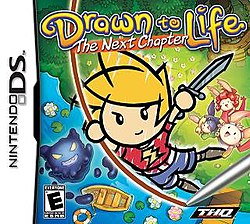
Dragon Quest IV: Chapters of the Chosen, titled Dragon Warrior IV when initially localized to North America, is a role-playing video game, the fourth installment of the Dragon Quest video game series developed by Chunsoft and published by Enix, and the first of the Zenithian Trilogy. It was originally released for the Famicom on 11 February 1990 in Japan. A North American NES version followed in October 1992, and would be the last Dragon Quest game localized and published by Enix's Enix America Corporation subsidiary prior to its closure in November 1995, as well as the last Dragon Quest game to be localized into English prior to the localization of Dragon Warrior Monsters in December 1999. The game was remade by Heartbeat for the PlayStation, which eventually was available as an Ultimate Hits game. The remake was ported by ArtePiazza to the Nintendo DS, released in Japan November 2007 and worldwide in September 2008. A mobile version based on the Nintendo DS remake was released in 2014 for Android and iOS.

Pac-Man Vs. is a 2003 maze video game developed by Nintendo and published by Namco for the GameCube. In the game, one player takes control of Pac-Man, who must eat all of the pellets in the maze, while the others control the ghosts to try to catch them. The objective is to be the first to reach a set number of points, selected before the game begins. The player controlling Pac-Man uses the Game Boy Advance to play, while the others use the television to control the ghosts. The game requires the GameCube - Game Boy Advance link cable in order to play.
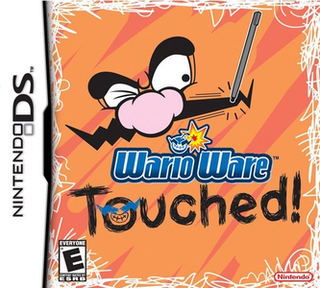
WarioWare: Touched! is a minigame compilation party video game released by Nintendo for the Nintendo DS. The fourth installment of the WarioWare series, and the first of three on the Nintendo DS, the game involves rapidly completing "microgames" — simple minigames lasting extremely short periods of time — as quickly as possible. The microgames are exclusively controlled with the Nintendo DS's touchscreen and microphone.

Anticipation is a video board game developed by Rare and released by Nintendo for the Nintendo Entertainment System (NES) in 1988. It is playable in either single-player or multiplayer mode, with up to four players competing against each other and/or computer-controlled opponents.
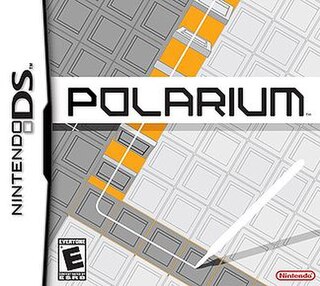
Polarium is a puzzle game developed by Mitchell Corporation and published by Nintendo for the Nintendo DS. It was a launch title in Japan, Europe and China. In the game, players use a stylus to draw lines on the DS's touch screen, flipping black and white tiles to clear puzzles.
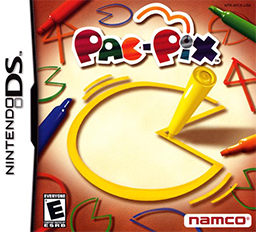
Pac-Pix (パックピクス) is a 2005 action video game in the Pac-Man series, developed and published by Namco for the Nintendo DS. As the first home Pac-Man video game to use motion controls, it involves using the Nintendo DS's touchscreen to draw Pac-Men and guiding them to eat all the ghosts on each page by using various gestures.
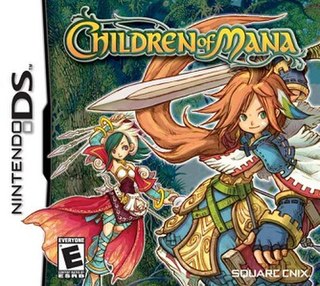
Children of Mana is a 2006 action role-playing game for the Nintendo DS handheld console. It was developed by Square Enix and Nex Entertainment, and published by Square Enix and Nintendo. It is the sixth game of the Mana series—following 2003's Sword of Mana—and the first entry in the World of Mana subseries. Set in a high fantasy universe, Children of Mana follows one of four young heroes as they combat an invasion of monsters and learn about the cataclysmic event that killed their families.

Bionicle Heroes is a 2006 video game published by Eidos Interactive and TT Games Publishing and based on Lego's Bionicle line of constructible action figures. The game was released in November 2006 on PlayStation 2, Xbox 360, GameCube, Microsoft Windows, Game Boy Advance, and Nintendo DS; a Nintendo Wii version was later released in April 2007. The home console and PC versions were developed by Traveller's Tales, while Amaze Entertainment developed the handheld versions. A version of the game for mobile phones, developed by Universomo, was also released. The home console and PC versions of the game are third-person shooters, while the Game Boy Advance version is a run 'n' gun shoot 'em up and the Nintendo DS version is a first-person shooter. The story of Bionicle Heroes, where the player seeks to liberate the island of Voya Nui and its inhabitants from the villainous Piraka, is not canon to the official Bionicle story.

Line Rider is a browser game or software toy, with versions available for Microsoft Silverlight, Javascript, Windows, and Flash. It was originally created in September 2006 by Boštjan Čadež, a Slovenian student. Soon after its initial appearance on DeviantArt, Line Rider became an internet phenomenon.

Lego Batman: The Videogame is a 2008 action-adventure video game developed by Traveller's Tales and published by Warner Bros. Interactive Entertainment, released for the Xbox 360, PlayStation 3, PlayStation 2, PlayStation Portable, Wii, Nintendo DS, Microsoft Windows, and Mac OS X. The game is based on the DC Comics character Batman, as well as the eponymous LEGO Batman toyline.
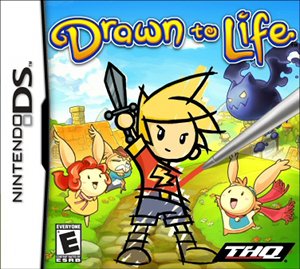
Drawn to Life is an action-adventure platform video game for the Nintendo DS developed by 5th Cell and published by THQ in 2007. It was later published by Agatsuma Entertainment in Japan in 2008 under the name Drawn to Life: God's Marionette, and in Korea under the title Geuryeora, Touch! Naega Mandeuneun Sesang. In the game, the player creates their own playable characters, level objects, and accessories by drawing them using the DS's stylus and touchscreen. The game was ported to iOS by WayForward and released by 505 Games in May 2014.

SimCity Creator is a city-building game for the Nintendo DS video game console. It was released in the Western world in September 2008, alongside its Wii counterpart. In Japan it was released several months ahead on March 19, 2008, as a sequel to SimCity DS under the name SimCity DS 2: Kodai kara Mirai e Tsuduku Machi.
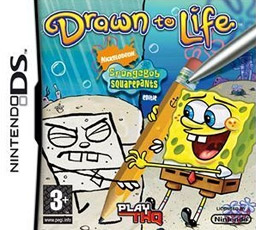
Drawn to Life: SpongeBob SquarePants Edition is a video game for the Nintendo DS. It is a spin-off of 5th Cell's 2007 DS game Drawn to Life, and is based on the Nickelodeon animated comedy series SpongeBob SquarePants, specifically the episode "Frankendoodle". The game was developed by Altron and published by Play THQ, a former subsidiary of THQ. It was released in North America, Australia, Europe, and Japan in 2008.
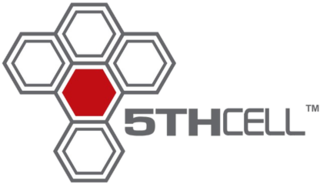
5th Cell is an independently owned American video game developer founded in 2003 as 5th Cell Media, LLC. led by Jeremiah Slaczka and Marius Falhbusch. The company is most well known for creating the Drawn to Life and Scribblenauts series.

Zuma's Revenge! is a 2009 tile-matching puzzle video game developed and published by PopCap Games. It was released for Microsoft Windows and Mac OS X, as a sequel to the earlier 2003 video game, Zuma, and was later ported to Windows Phone.

Art Academy, also known as Art Academy: Learn painting and drawing techniques with step-by-step training in the PAL regions and Artistic Taste Classroom DS in Japan, is an art training software for the Nintendo DS. It was developed by Headstrong Games and published by Nintendo. Art Academy was originally a two-part training application only available for download via the DSiWare service since 2009. It was later re-released in 2010 as a fully compiled, retail-able DS Game Card with added features, thus also making it available for original Nintendo DS and Nintendo DS Lite users.
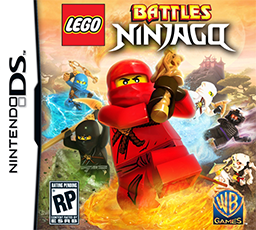
Lego Battles: Ninjago is a real-time strategy game developed by Hellbent Games and published by Warner Bros. Interactive Entertainment. It was released on 12 April 2011 in North America, 15 April 2011 in Europe, and 20 April 2011 in Australia for the Nintendo DS. It is a follow-up to Lego Battles. Unlike the previous game, Lego Battles: Ninjago is loosely based on the pilot season of the Ninjago: Masters of Spinjitzu animated television series.
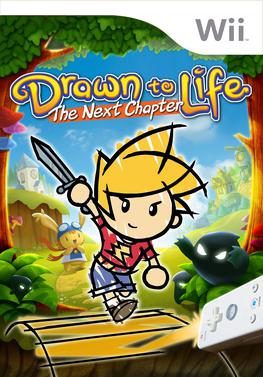
Drawn to Life: The Next Chapter is a platform game developed by Planet Moon Studios and published by THQ for the Wii. Despite having the same title, it has a different plot compared to the DS version.

Drawn to Life: Two Realms is a puzzle-platform game developed by Digital Continue and published by 505 Games. The game is a sequel to Drawn to Life: The Next Chapter and was released on December 7, 2020.

Drawn to Life is an action-adventure puzzle platform video game series originally developed by 5th Cell and published by THQ. Since 2013 all entries in the series have been published by 505 Games.
